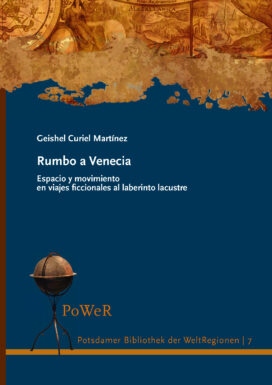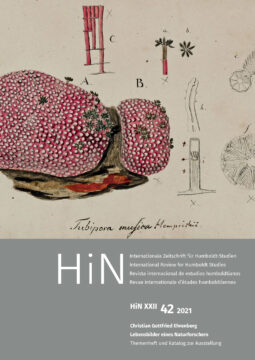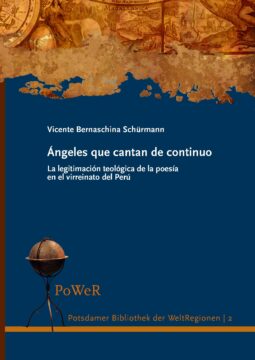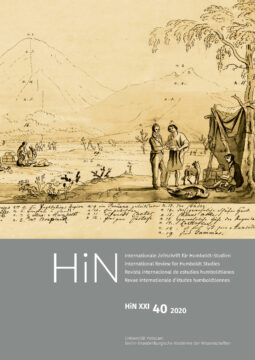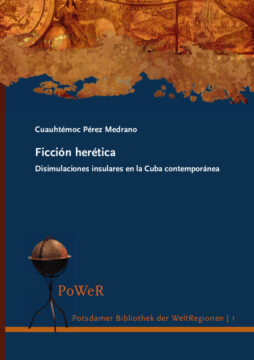This research explores the representation of journeys to Venice in twentieth-century Latin American and German-language literature. Theoretical approaches to travel writing are used to decipher the mythical structure underlying the description of the journey to the lagoon city. The aim is to show the narrative and stylistic means by which this mostly shadowy journey is interwoven with the gradual emergence of the protagonists’ conflict. Furthermore, through the comparative study of some emblematic architectural elements such as palaces, bridges and, above all, the labyrinthine structure, the specificities of the representation of Venice in works by Julieta Campos, Alejo Carpentier, Julio Cortázar, Hugo von Hofmannsthal, Thomas Mann and Sergio Pitol will be highlighted. The aim is firstly to make visible the role of Venice in Latin American literature and secondly to offer new keys for reading works that have been widely studied, but not in a transareal juxtaposition.
Espacio y movimiento en viajes ficcionales al laberinto lacustre
ISBN: 978-3-86956-558-3
252 pages, Paperback
Release year 2024
Series: Potsdamer Bibliothek der WeltRegionen , 7
14,50 €
Non-taxable transaction according to § 1 (1) UStG/VAT Act in combination with § 2 (3) UStG/VAT Act a. F. Providing this service, the University of Potsdam does not constitute a Betrieb gewerblicher Art/Commercial Institution according to § 1 (1) No. 6 or § 4 KStG/Corporate Tax Act. If the legal characterization of our business is changed to a commercial institution subsequently, we reserve the right to invoice VAT additionally. zzgl. Versandkosten
This research explores the representation of journeys to Venice in twentieth-century Latin American and German-language literature. Theoretical approaches to travel writing are used to decipher the mythical structure underlying the description of the journey to the lagoon city. The aim is to show the narrative and stylistic means by which this mostly shadowy journey is interwoven with the gradual emergence of the protagonists’ conflict. Furthermore, through the comparative study of some emblematic architectural elements such as palaces, bridges and, above all, the labyrinthine structure, the specificities of the representation of Venice in works by Julieta Campos, Alejo Carpentier, Julio Cortázar, Hugo von Hofmannsthal, Thomas Mann and Sergio Pitol will be highlighted. The aim is firstly to make visible the role of Venice in Latin American literature and secondly to offer new keys for reading works that have been widely studied, but not in a transareal juxtaposition.
Recommended Books
-
 2021
2021Katrin Böhme, Ferdinand Damaschun, Anne Greenwood MacKinney, Mathias Grote, Regine Jahn, Wolf-Henning Kusber, Christoph Markschies, Ulrich Päßler
Alexander von Humboldt im Netz ; 22 (2021) 42
42,00 €Non-taxable transaction according to § 1 (1) UStG/VAT Act in combination with § 2 (3) UStG/VAT Act a. F. Providing this service, the University of Potsdam does not constitute a Betrieb gewerblicher Art/Commercial Institution according to § 1 (1) No. 6 or § 4 KStG/Corporate Tax Act. If the legal characterization of our business is changed to a commercial institution subsequently, we reserve the right to invoice VAT additionally.
zzgl. Versandkosten
Add to cart -
 2019
2019Ángeles que cantan de continuo
18,50 €Non-taxable transaction according to § 1 (1) UStG/VAT Act in combination with § 2 (3) UStG/VAT Act a. F. Providing this service, the University of Potsdam does not constitute a Betrieb gewerblicher Art/Commercial Institution according to § 1 (1) No. 6 or § 4 KStG/Corporate Tax Act. If the legal characterization of our business is changed to a commercial institution subsequently, we reserve the right to invoice VAT additionally.
zzgl. Versandkosten
Add to cart -
 2020
2020Cándido Manuel García Cruz, Eberhard Knobloch, Heinz Krumpel, Ingrid Männl, Ulrich Päßler, Christina Pinsdorf, Marcus Schladebach
Alexander von Humboldt im Netz ; 21 (2020) 40
19,50 €Non-taxable transaction according to § 1 (1) UStG/VAT Act in combination with § 2 (3) UStG/VAT Act a. F. Providing this service, the University of Potsdam does not constitute a Betrieb gewerblicher Art/Commercial Institution according to § 1 (1) No. 6 or § 4 KStG/Corporate Tax Act. If the legal characterization of our business is changed to a commercial institution subsequently, we reserve the right to invoice VAT additionally.
zzgl. Versandkosten
Add to cart -
 2019
2019Ficción herética
10,00 €Non-taxable transaction according to § 1 (1) UStG/VAT Act in combination with § 2 (3) UStG/VAT Act a. F. Providing this service, the University of Potsdam does not constitute a Betrieb gewerblicher Art/Commercial Institution according to § 1 (1) No. 6 or § 4 KStG/Corporate Tax Act. If the legal characterization of our business is changed to a commercial institution subsequently, we reserve the right to invoice VAT additionally.
zzgl. Versandkosten
Add to cart
Publisher Info
Contact
Potsdam University Library
University Press
Am Neuen Palais 10
14476 Potsdam
Germany
verlag@uni-potsdam.de
0331 977-2094
0331 977-2292

